My Type of Music: Lady Gaga, Arcade Fire, Brian Wilson, David Gray, Mogwai, Usher, Katy Perry

The thing with being late with the episode of ScreenFonts means the next instalment of My Type of Music follows close on its heels. I hope you don't mind that much pop culture so close to each other.
Two weeks ago I noticed a FontFeed co-editor and partner in type geekery Stephen Coles.
I'm out of touch with music lately. @BaldCondensed's Album art reviews have become my source for discovering new releases.
It goes without saying I am flattered. I myself always play some tracks of the best reviewed albums in the background while writing, which helps me keep up to date too. Yet I have to point out that if you rely solely on the My Type of Music posts you run the risk of missing out on some relevant releases. For example the excellent Tomorrow Morning, the final section of the Eels' concept album trilogy, and Black City, the "dark masterpiece" by Texas-born electronic artist Matthew Dear, are both missing in this month's overview, simply because they have no type nor lettering on them. And the comic book artwork for Asylum by hard rock arena headliners Disturbed is simply too silly for words. So, thank you for the vote of confidence, but don't forget to occasionally check the full list of album reviews on Metacritic Music.

We start this new episode postal style. The artwork for Str8 Killa, the eight-track EP that follows on the heels of Freddie Gibbs' 2009 independent mixtapes, The Miseducation of Freddie Gibbs and midwestganstaboxframecadillacmuzik, looks like a sheet of stamps. The dark cut-out black-and-white portrait of the artist against the flat ochre background has an iconic 60s feel to it. Ageing the background and repeating the image give the overall design this certain je ne sais quoi that I find very attractive. The aptly named compact sans serif Compacta perfectly fits the 60s atmosphere, as it was one of the preferred type designs of that period, specifically of ska and the mods.

A wonderful collage adorns On the Ones and Threes, the first new album in 10 years for Versus, which sees the indie rock trio return with its original lineup. Some may argue that the composition is a little busy for a CD cover. The design is upbeat and witty – I love the playful way the band members were incorporated in the colourful canvas. Richard Baluyut lifting off like some kind of pious superhero? Pretty funny.
Perla, the delicate didone used for the band name may well be my favourite unicase design. Gareth Hague packed enough alternate glyphs in his ornate design to allow for the most diverse combinations, which makes it ideal for packaging and editorial design. By the way, my fondness for unicase typefaces and mixed case setting has been questioned by a number of my "serious" type designer friends, so I maybe should address this once and for all in a future FontFeed post. I'll try to schedule one in.

Weareallgoingtoburninhellmegamixxx3, an album of instrumental tracks by indie hip hop royalty El-P, couldn't look any less hip hop. The cover illustration painted in watercolours seems to come straight from an underground cartoon, an impression reinforced by the hand drawn three-dimensional treatment of the artist's name, and the comic book-like lettering at the bottom.

Trill O.G by Bun B however does everything a hip hop album sleeve needs to do. The rapper displays the proper devil-may-care attitude, and sports the obligatory cap and bling. The tag on the window remembers Pimp C, who along with Bun B formed the influential hip hop group UGK (short for Underground Kingz). And the type conforms to the trend of the past few years of having ornamental, mostly blackletter faces on mainstream hip hop and gansta rap album sleeves. If I am not mistaken the Texas-shaped hyphen in his name proudly displays Bun B's regional allegiance. And to make sure there is no misunderstanding, the silhouette is used a second time as the dot in the abbreviation "O.G".

Talk about contrast – from hip hop bling excess to tasteful indie class. Where the Messengers Meet, the sophomore disc by Seattle indie rock quintet Mt. St. Helens Vietnam Band features a dried bouquet of flowers on an off-white background. The subdued typography, and the size and internal proportions of all the elements emanate a soothing quietness. The classic brown Linotype Didot caps above and below it beautifully complement the melancholic image.

The House, the fourth studio album by Katie Melua has an enchanting picture of the Georgian-born British singer-songwriter. Those gorgeous eyes piercing the dark and moody picture transfix the viewer and simply won't let go. The white bright little specks in her face give the image a translucent quality, as if the starry night sky shines through her skin.
The grunge sans typography counterbalances the mysterious, magical image. The face used for the album title seems based on News/Trade Gothic, while the artist's name looks like an autotraced Arial.

The stare in Lady Gaga's eyes on the cover for The Remix – an album of remixes of her hits originally released in Japan – on the other hand is, shall we say, a little … shallow. And excuse me for saying so, but the typography is one monumental missed opportunity. Consider for a moment the material the art director/designer/whoever cobbled this together had at their disposal. We're talking about a baroque portrait of an extravagant, completely over-the-top artist with an undefined sexuality who oozes camp from every single pore. And all they could come up with is a neatly justified block of knocked-out Trade Gothic Bold No. 2 in the upper left corner? Try harder, wimps! Sheesh … : /

In a weird way the album cover for last episode's Intriguer by Crowded House. I guess it must be the beige background with the coloured specks, and the bizarre script-like album title. Whatever. The multi-coloured band name is set in Alternate Gothic, Morris Fuller Benton's indestructible narrow gothic favoured by many a book cover designer.

Although I like the look and feel of Tribal, the new album in which Dr. John revives his Night Tripper persona, I don't really understand the choice of Matrix on the album cover. There is nothing tribal about Zuzana Licko's early computer design. This 1992 classic was thoroughly revised three years ago, greatly improving the originally rather rigid design. The image of an African mask however clearly refers to the voodoo religious ceremonies, including elaborate costumes and headdress, that infused Dr. John's elaborate stage shows during his Night Tripper period from 1968 to '71.

On the other hand the typography on Croweology, the double-disc acoustic album released in conjunction with The Black Crowes' 2010 farewell tour, goes well with the music genre. Although the lettering style is rooted in the Art Nouveau period and is influenced by turn-of-the-century Viennese poster designer Alfred Roller, the shapes in this compact psychedelic design also seem to refer to native American arts and crafts. The curves are quite similar to carvings found on totem poles and related artefacts. The type comes very close to Mojo, Jim Parkinson's interpretation of a lettering style popularised by 1960s creators of psychedelic posters Wes Wilson, Victor Moscoso, and Rick Griffin. The pencil drawing inside the character shapes carries at least one nod to previous Black Crowes albums: the stars'n'stripes bikini bottom from Amorica in the A.

The minute differences in the characters of the album title on the cover for Tin Can Trust by three-time Grammy Award winning American Chicano rock band Los Lobos tell us the casual brush sans was truly hand lettered. The distressed industrial caps with extruded effect used for the band name look very much like Cordoba.

Also hand drawn is the band name on The Suburbs, an album of soaring anthems and varied instrumentation by indie rock royalty Arcade Fire. The Suburbs is released in eight different covers. The album artwork was designed by Caroline Robert with photographs by Gabriel Jones, and art directed by Vincent Morisset. The allocation is completely random.
Arcade Fire The Suburbs Synchronized Artwork Version from ian rogers on Vimeo.
Interestingly, I found on Clusterflock that
Arcade Fire have apparently re-engineered the concept of the album for the digital age. The digital version of their new release The Suburbs comes bundled with .m4a files that present a stream of visuals and synchronized lyrics (finally!), along with a deep nest of embedded contextual links that work like an easter-egg hunt, encouraging the user to keep clicking.
Above is a video created by Topspin's Ian Rogers, showing what the synchronized artwork looks like in action. Make sure to also read the related post on Pop & Hiss, the L.A. Times music blog.

Look how deliciously 70s the album cover for Own Side Now, the full-length debut from Nashville's Caitlin Rose looks, down to the magenta discolouration in the upper left-hand area. Everything gels – the styling of the photograph as well as the typography. The display script used for artist's name looks custom designed, with the swash cross-bar of the "t" extending from the title of the "i" to the end of the name. Yet with the possibilities of feature-rich OpenType fonts one can never be 100% sure these days. The album title is set in H&FJ Archer.

The artwork for III, the third full-length album for the Staten Island group The Budos Band, recorded live during a 48 hour period, is as sparse as its title. Basically it's a coiled cobra primed for attack, prowling the band's name set in Champion Gothic. Hey, what're you gonna do about it – it works.

I can't make out if the cobra in the previous album cover is fake or a live specimen, but it looks nowhere near as plastic as Duke University student cum pop singer Mike Posner (also known as "Baby Timberlake") on the cover for 31 Minutes To Takeoff. I foolishly claimed the typeface was Cochin; fortunately the ever vigilant and helpful Mark Simonson was quick to point out it actually is Goudy Modern. Don't ask me what the symbol in the "O" signifies.

Equally artificial is the photograph of Blake Shelton on the album cover for All About Tonight, an album full of hell-raising, liquored-up country hits by the Southern rocker. Conceptually the grunged up ITC Avant Garde Gothic has no relation whatsoever with the superslick design, which makes it seem like a pointless exercise.
I suddenly realise discussing these two covers made me waste valuable minutes that are now lost to me forever. Rats!

This however is very tasty. The album cover for No Ghost by Canadian indie folk band The Acorn is a reproduction of a multi-layered print in ochre, magenta, and black. There seems to be a dog's head in there, but as all the passes are printed on top of each other and a little smudged, other than that I can barely make something out of the image. To be honest I don't really care. Attempting to decipher this confusing artwork is its own reward, as you keep coming back to it to give it another try. The lettering in the lower left corner is done by hand.

The colourful cover for Come And Get It, the first album for a major label by Eli "Paperboy" Reed is very tongue-in-cheek . The supermarket setting makes the brush sans serif FF Sale an ideal choice for the sign he's holding.

God Willin' & the Creek Don't Rise, the self-produced album by American singer-songwriter Ray LaMontagne has an entirely typographic album cover. The decorative lettering style reminds me of mirror advertisements from the end of the 19th, beginning of the 20th century, with Art Nouveau overtones. If you want to achieve a similar effect look at type designs like Art Gothic, Hermosa, Recherché, and so on for inspiration.

The artwork for No Better Than This, the T-Bone Burnett produced album for singer-songwriter John Mellencamp, emulates the cover of an old and worn notebook. The creases and damaged corners nail the look completely. The extra bold didone in the blue sticker-like area is Poster Bodoni, while the finishing touch is provided by the catalogue number in Snell Roundhand at the top and "Mono" in Helvetica caps at the bottom.

Texas trio Toadies go psychedelic on the cover for Feeler, a collection of rerecorded songs originally meant as the follow-up to 1994's breakthrough album, Rubberneck. Meandering fractals swirl like bright orange tendrils on a dark purple background, making the triangle look like an outrageous, tentacled alien divinity. I didn't find the faceted italic of the band name, yet the ornamental serif face at the bottom is very familiar to me. Rodrigo Xavier Cavazos' Alembic – a very peculiar ornamental serif face – was originally sketched up around 1994. Rodrigo set out to build a set of robust, utilitarian letter forms with a smooth finish and eccentric sensibility. He also wanted to incorporate a 'visual rail' in the typeface by way of the flattened zones on some letters. The design is full of naïve constructions. Some are intentional, most accidental, but all of them contribute to the quirky quality of the face.
Another typeface in the same vein is Stefán Kjartansson's Gor, one of my favourite deconstructed/reconstructed ornamental designs from the grunge heydays.

Aw, I simply love the artwork for Brian Wilson Reimagines Gershwin, the tribute album recorded with the support of the Gershwin estate. Brian Wilson put his own stamp on a number of George Gershwin classics, a and completed two songs left unfinished at the time of the composer's death. The piano keyboard exploding in multicoloured bars reminds me of the gorgeous album sleeves from the 50s and 60s, when designers still knew how to create striking posters and album sleeves with simple abstract forms. Having the keys cut out and painted by hand give them a that little extra texture that is so appealing. The two lines of bold italic Bodoni with the dotted line in between are perfectly in tune with the rest of the design, and fit the referenced period to a tee.

Alas … a user on the Brian Wilson fan board pointed out the obvious similarities with last year's Novö Piano by Maxence Cyrin. Plagiarism, or a very unfortunate resemblance? Who will tell?

Alive As You Are, the album crossing genres with punk-infused psychedelic jams by Los Angeles quintet Darker My Love violates a primary rule in typography. Do not set blackletter – in this case Old English Text/Cloister Black – in all caps. Do not.

Foundling, the double album of hits by British singer-songwriter David Gray – who has the best-selling album ever in Ireland – has a stylish, ethereal album cover. The hand movement and parts of his face almost disappearing in the overexposed parts make the grainy picture look very arty. Tomi Haaparanta's Aged was used for the artist's name; the album title seems to be set in FF Trixie or a similar distressed typewriter font.

Now this is one kickin' album sleeve. Fitz & the Tantrums, the Los Angeles band led by Michael Fitzpatrick, goes for 1960s soul on its debut album Pickin' Up The Pieces. I can't really explain why I like the artwork so much; all I can say is the red and blue blended images on that solid black really jumped at me. The juxtaposition of the sultry expression on the woman's face and the man's intense, almost angry gaze create a great tension, a kind of love/hate yin and yang.
Although it fits the period reference of the music, Compacta is nothing spectacular. Yet the cutting up of the second word, the compact setting, and the clever placement at the bottom – note how the type seems to push away the knee and leg of the man – lift the typography to a higher level.

I don't know if it is intentional (it must be): the multi-coloured band name on the album cover for Memphis, the debut album produced by Shane Stonebeck for the Tennessee five-piece band Magic Kids, immediately reminded me of the Milan-based collective of the same name. After its 1981 debut, this group of young furniture and product designers led by the veteran Ettore Sottsass dominated the early 1980s design scene. Its post-modernist style was typified by bright colours and diverse shapes, which are echoed in the Futura caps.

Special Moves/Burning, recorded over three performances at the Music Hall of Williamsburg in April 2009 in Brooklyn, New York, is Mogwai's first live album/DVD release. The semi-abstract, grainy black-and-white photograph beautifully translates the sometimes dreamy, sometimes dark post-rock of the Scottish group. Just like in their music, what is not shown is as important as what is shown. The compressed grotesque is nigh impossible to identify – they all look so similar.

When I was young I was an avid reader of science fiction literature, devouring the work of Isaac Asimov, Arthur C. Clarke, Philip K. Dick, Ray Bradbury, James Blish, and so on. Yes, I was that popular with girls. ; ) Part of the appeal were the often beautifully painted covers depicting epic space scenes. The artwork for Warp Riders by Texan sluggers The Sword unashamedly references the geeky 70s science fiction book covers of my youth. It reflects the conscious change in style, from the fantasy, sword and sorcery themes of their first two albums, to science fiction for this concept album. I tried to find which artist did the painting – I suspected it may be Chris Foss. Yet FontFeed reader Joris-Jan confirmed the artwork that pays homage to the authors that inspired the album's lyrics was painted and designed by Dan McPharlin.
The black border with double white frame convincingly references the trade dress of many of the book covers I remember. And the customised Pump capitals paired with mixed case Helvetica perfect the illusion. A conceptually sound and expertly executed album sleeve.

I can't even remember why I included the album cover for Versus, another album full of confessional slow jams and club bangers by Usher in this episode. The hue progression from red to violet in the portrait of the Grammy Award-winning R&B recording artist and actor is neat, and the type in the black half is, well, Helvetica Condensed.

Hawk is the third collaborative album between former Belle & Sebastian songbird Isobel Campbell and former Screaming Trees frontman Mark Lanegan. While looking for the photographer of Richard Thompson's Dream Attic cover (near the end of this post) I serendipitously stumbled upon similar portraits of the two artists in a car, so this photograph may have been taken by Pamela Littky. The heavenly combination of Lanegan's gravely timbre and Campbell's ethereal voice is echoed in the slightly "dirty" look of the image.
I only regret Franklin Gothic was set so unimaginatively. There certainly was no need to pull out all the stops, but a subtle nudge here and there to better integrate it in the image would've been most appreciated.

New York based artist Will Cotton created the painting used for the album cover for Teenage Dream, the sophomore release of pop-rock gems by Katy Perry . The Grammy Award-nominated singer first contacted the painter more than a half year ago to share her enthusiasm for his work.
The day I found Will Cotton, I knew I wanted to live in his cinematic cotton candy world. A fantastically art-directed music video and one piece of timeless album artwork later, I can proudly say I am more than a fan. Will has been a sweetheart every step of the way and always open to collaborative ideas. I'm so happy to have discovered his candy-land, and so excited about our creative future together.
The music video for "California Gurls" based on Cotton's art prominently features his trademark cotton candy clouds, candy stick forests, and gingerbread cabins in the fantasy scenery. These served as inspiration for the lettering on the album sleeve – the artist's name looks like red string candy, and the album title like half-melted candy sticks bent into letter forms. I like camp, but I honestly think the half-hearted execution and timid placement of the lettering fall short. This could have been far more convincing and fun.

I regret not having found who was responsible for the kaleidoscopic image on the album cover for Rivers, the husband-and-wife Swedish duo Wildbirds & Peacedrums' third album recorded with an Icelandic choir. It's crazy how mirroring the black-and-white image both horizontally and vertically turned it into some menacing alien robot insect monster. I am sure everybody will interpret the image differently, but that's what came up first in my pop culture-drenched mind.
The elegant stencil sans serif is Nikola Djurek's stencil serif design Typonine Stencil. H&FJ Mercury Text was used for the band name (see also Christian Schwartz's Farnham for another interpretation of Fleishmann's type).

Errr, next better hire a professional designer, or at least someone who actually knows something about type design. The custom drawn Fantasia on the album cover for Back to Me, the highly anticipated third album by American Idol songstress, looks very awkward. The letters have erratic weight distribution, weird proportions, and a total lack of optical correction that makes all the curves and joins look wonky.

To some extent the same applies to the script used for the artwork on Something for the Rest of Us, which finds the Goo Goo Dolls exploring the intersection of mainstream pop/rock and adult contemporary balladry. The design is of a little better quality, yet the curves aren't nearly as fluid as they should be, and the weight progression in the strokes is quite awkward as well. If you like really nice curves and swashes check the work of Alejandro Paul, for example Affair, Buffet Script, La Portenia, or Ministry Script. The album title is set in Copperplate Gothic.

In case you are wondering what bizarre version of Gill Sans was used on the album cover for Junky Star by Golden Globe and Oscar-winning songwriter Ryan Bingham & the Dead Horses – it is not the seminal humanistic sans by Eric Gill. The typeface is Doric Bold, a sturdy sans serif specifically designed for use in very small sizes, for example classified ads in newspapers. Originally released by the Stephenson, Blake foundry in England, it is modelled on sans serif types by William Caslon IV, who cut the first sans serif faces as early as 1816.
The image of the rust-coloured plane is quite nice, although the grain looks a little artificial. The script on the side of the aircraft could fit in the Sports Scripts FontList; its identity remains a mystery for now.

I can't remember when last I saw Parisian used well in a non-period setting. The album cover for Dream Attic, 13 new songs by Richard Thompson recorded in front of audiences during a February 2010 West Coast tour, proves a theory of Wolfgang Weingart I firmly believe in. A good art director/designer/typographer can create a beautiful design with an "ugly" typeface. In this case R. Hunter Middleton's elegant Art Deco face is not exactly ugly, but very period-specific, and looks – let's admit it – a little corny in a contemporary context. What makes it work is the compact centred all caps setting, in combination with the delicate gradient filling. Normally I'd scoff at those gradients, but here they look just fine offset against the rich and intense hues of the cover image.
By the way, I tried to track down the photographer of this melancholic image, but never received confirmation if it was by Pamela Littky as well. One of my many unsuccessful investigations for this episode.

This month I leave you with a wonderful "making of" video for Red Velvet Car, the acoustic-heavy new album by Heart. You have to admire the guts of the sisters of arena rock for going for such an almost campy, unabashedly 70s–80s airbrush design. It veers dangerously close to Spinal Tap territory, yet I have the impression there is no irony involved – this is the real deal. A shiny winged heart mounted on the radiator grille of a purple vintage car? Eat this, you Helvetica-worshipping, goatee-stroking, IDM-loving hipsters! The band logo is glorious, a chrome rendering of something halfway between the original Bookman Swash and Candice. I am less pleased with the embossed treatment of the Art Deco sans for the album title.
Red Velvet Car Cover Concept — Jesse Higman from Heart on Vimeo.
The video shows how artist Jesse Higman entirely computer generated the artwork starting from pencil sketches, after which it was modelled in 3D and animated in Maya. Which may be the only ironic aspect of this sleeve design: airbrush originally was the technique of choice to faithfully render three-dimensional objects, and now three-dimensional modelling is used to emulate nostalgic airbrush art. We come full circle.

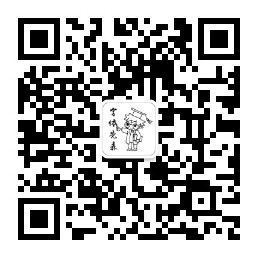




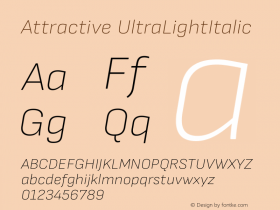









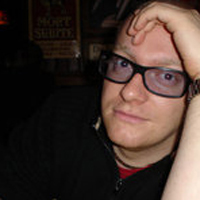

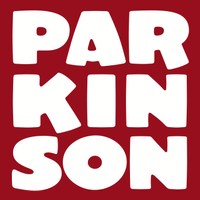




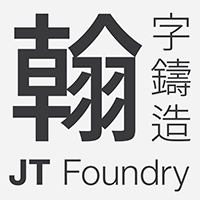
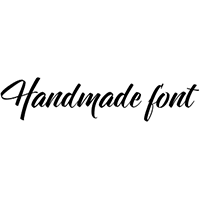
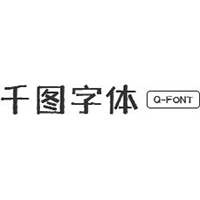
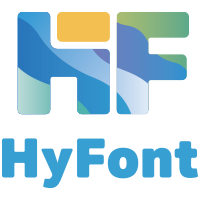
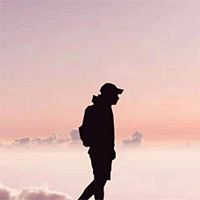







 闽公网安备35010202000240号
闽公网安备35010202000240号